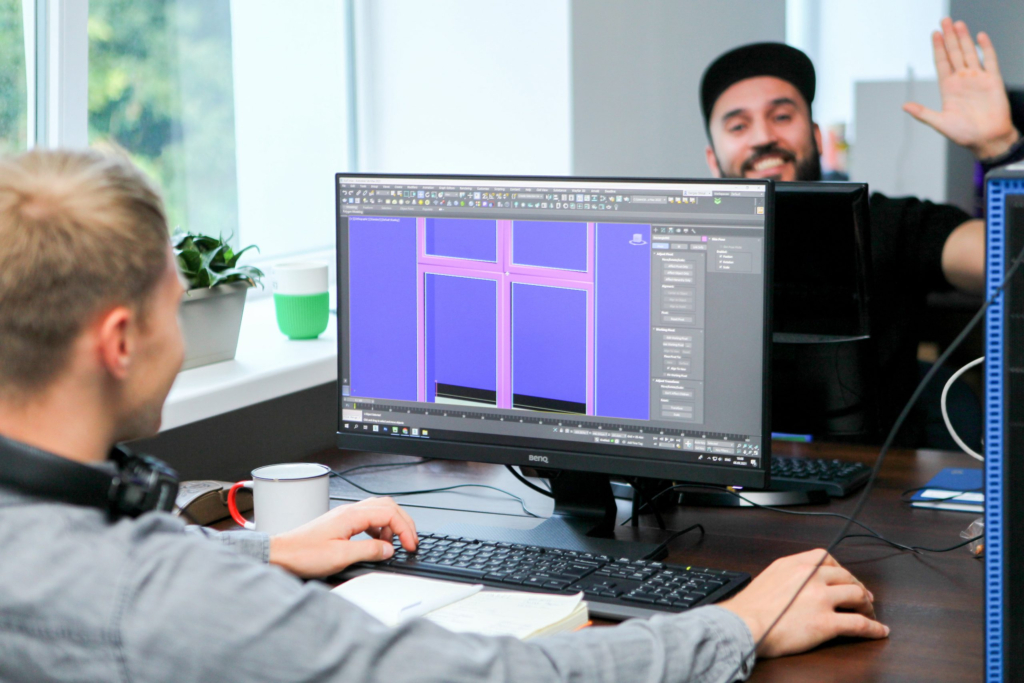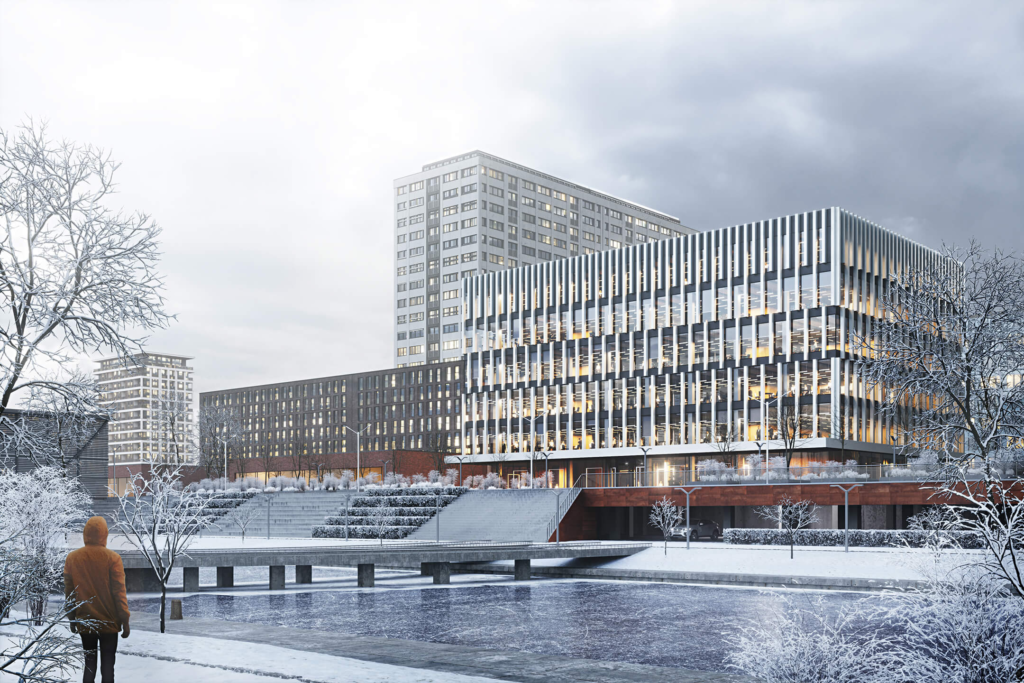Rendering Artist (1 years diploma)
Rendering Artist click here
Brief Job Description: Individuals at this job need to convert three-dimensional
geometric models into a set of viewable images
Personal Attributes: This job requires the individual to know the techniques and
principles of rendering and 3D animation. The individual must also know the
theory and principles of light, shadows, exposure and colour space. The
individual must be able to work on rendering software such as Render man,
MEL, Maya, 3D Studio Max and Blender and translate rendering specifications
accurately into the appropriate resolution, aspect ratio and pixel ratio to feed
into the software.

Description
Budget Budget is an estimate of the total cost of production that may include a
break-up of cost components
Colour grading Colour grading is the process of modifying/enhancing the colour of
productions
Compositing Compositing is the process of combining layers of images/elements into a
single frame
Computer-generated
effects
Computer-generated effects is the process of creating illusionary images
for use in productions
Creative Brief Creative brief is a document that captures the key questions that serve as
a guide for the production including the vision, objective of the project,
target audience, timelines, budgets, milestones, stakeholders etc.
Digital Intermediate Digital Intermediate is the process of altering the colour characteristics of
a digital version of the production
Editing Editing is the process of organizing, cutting and putting together audio,
visual footage to prepare an accurate, condensed and consistent final
output that communicates the expected content
Footage Recorded medium in any media
Ingest Ingest is the process of importing the relevant audio visual files and/or
images to the computer’s hard disk and uploading them to the editing
software
Modeling Modeling is the process of creating three-dimensional models for
animation using a specialised software application.
Rendering Rendering is the process of converting three-dimensional models into
two-dimensional images with 3D effects
Rotoscopy Rotoscopy is the process of breaking down content into individual
frames, tracing out individual images and altering content according to
requirements
Screen conversion Screen conversion is the process of conversion from 2D to 3D
Sound editing Editing of sound materials with/ without visuals
Visual effects Visual effects is the process of integrating live-action footage with
computer-generated effects
Timelines It is a basic part of editing software to view/ cut material
Sector Sector is a conglomeration of different business operations having similar
businesses and interests. It may also be defined as a distinct subset of the
economy whose components share similar characteristics and interests.
Sub-sector Sub-sector is derived from a further breakdown based on the
characteristics and interests of its components.
Vertical Vertical may exist within a sub-sector representing different domain
areas or the client industries served by the industry.

Occupation Occupation is a set of job roles, which perform similar/related set of
functions in an industry
Function Function is an activity necessary for achieving the key purpose of the
sector, occupation, or area of work, which can be carried out by a person
or a group of persons. Functions are identified through functional
analysis and form the basis of OS.
Sub-functions Sub-functions are sub-activities essential to fulfill the achieving the
objectives of the function.
Job role Job role defines a unique set of functions that together form a unique
employment opportunity in an organization.
Occupational Standards
(OS)
OS specify the standards of performance an individual must achieve
when carrying out a function in the workplace, together with the
knowledge and understanding they need to meet that standard
consistently. Occupational Standards are applicable both in the Indian
and global contexts.
Performance Criteria Performance Criteria are statements that together specify the standard
of performance required when carrying out a task
National Occupational
Standards (NOS)
NOS are Occupational Standards which apply uniquely in the Indian
context.
Qualifications Pack
Code
Qualifications Pack Code is a unique reference code that identifies a
qualifications pack.
Qualifications Pack(QP) Qualifications Pack comprises the set of OS, together with the
educational, training and other criteria required to perform a job role. A
Qualifications Pack is assigned a unique qualification pack code.
Keywords /Terms Description
NOS National Occupational Standard(s)
QP Qualifications Pack
NSQF National Skill Qualifications Framework
NVEQF National Vocational Education Qualifications Framework
NVQF National Vocational Qualifications Framework
3D Three-dimensional

TD Technical Director
Understand requirements and plan workflow
Description This OS unit is about understanding the post-production requirements and planning
the process and workflow
Scope This unit/task covers the following:
Understanding requirements for post-production
Planning the process for post-production.
Preparing and finalising effort estimates and work plan
Performance Criteria (PC) w.r.t. the Scope
Element Performance Criteria
Understanding
requirements for
post-production
To be competent, the user/individual on the job must be able to:
PC1. Understand the creative and technical requirements and expectations in
terms of quality of deliverables and timelines, as necessary to the role
Planning the process
for post-production
PC2. Determine key post-production processes that would be involved to produce
the desired outcome and chart-out the process workflow, as per role
Key processes could include computer-generated effects, colour grading,
digital intermediate, screen conversion, rendering, rotoscopy, keying,
match-moving and compositing
Preparing and
finalising effort
estimates and work
plan
PC3. Translate, or support senior personnel in translating, expectations into effort
estimates for each process
PC4. Prepare a work plan, for oneself or other team members if appropriate,
keeping in mind the impact on the production budget, timelines and technical
viability
Knowledge and Understanding (K)
A. Organizational
Context
(Knowledge of the
company /
organization and
its processes)
The user/individual on the job needs to know and understand:
KA1. Production vision, objectives, expected output, distribution/exhibition
channels
KA2. Post-production objectives, expected outcomes and quality standards
KA3. The technical, budget and time constraints applicable
KA4. Established data management and work flow systems
KA5. How to maintain quality control as production scales

B. Technical
Knowledge
The user/individual on the job needs to know and understand:
KB1. Post-production techniques that would apply to the current production, as
per role
KB2. The relevant equipment and software required e.g. Silhouette, Nuke, Fusion,
Combustion, Shake Premier, PF track, After Effects, Renderman, Quantel,
Smoke, Flame, Avid, 3DS Max and FCP
KB3. How to translate script requirements and post-production objectives into a
schedule that could cover the workflow, key activities, deliverables and
timelines, as appropriate to the role
KB4. The implications of each activity on time, materials, equipment, manpower and budget, as appropriate to the role
KB5. The impact of each activity on the one’s own, or the wider team’s, process
workflow
KB6. How to estimate the cost and time it would take, keeping in mind the
intended visual style
KB7. Domestic and International post-production best practices prevalent in the
industry
KB8. Applicable copyright norms and intellectual property rights
KB9. Applicable health and safety guidelines
Skills (S) (Optional)
A. Core Skills/
Generic Skills
Writing Skills
The user/individual on the job needs to know and understand how to:
SA1. Document post-production requirements that can serve as a reference
document for circulation to the team
SA2. Document decisions on the processes involved and techniques to be used
with reasons thereof
SA3. Document the project work-plan including the key deliverables, resources
involved and timelines, as required in the role
SA4. Document do’s and don’ts for different machines and software for reference
of the team
SA5. Document other areas (e.g. requirements of the target audience, market,
end-product, reference links and videos) that may be relevant for the team
Reading Skills
The user/individual on the job needs to know and understand how to:
SA6. Read and understand the script and determine requirements, as per role
SA7. Read and research about emerging techniques in post-production
SA8. Read user manuals for equipment and software
SA9. Read about the tastes and preferences of the target audience and the market
where the end-product intends to be distributed
Oral Communication (Listening and Speaking skills)
The user/individual on the job needs to know and understand how to:
SA10. Understand the creative vision of the Director and Producer, and resolve any
issues, as necessary to the role
SA11. Communicate with team members, relay instructions, collaborate and resolve
issues with members of the post-production team handling different
aspects/processes to determine the effort involved for the activities that
would need to be performed (Supervisor)
Plan and Organize
The user/individual on the job needs to know and understand how to:
SB1. Plan the activities, workflow, resourcing and timelines in accordance to the
creative and technical requirements
SB2. Create post-production schedules, for oneself or the wider team
SB3. Use time management techniques so that the scheduled time is not exceeded
SB4. Manage and enforce deadlines successfully–on time
SB5. Work well in a fast-paced environment
Problem Solving
The user/individual on the job needs to know and understand how to:
SB6. Identify any issues that may arise during post-production and find solutions to
address them

Analytical Thinking
The user/individual on the job needs to know and understand how to:
SB7. Have a keen eye for detail and maintain an aesthetic sense towards colour
grading, vfx components and software capabilities of the final output
SB8. Envision the impact of selecting a particular technique/activity on the budget,
resourcing and timelines
Critical Thinking
The user/individual on the job needs to know and understand how to:
SB9. Appraise the quality of the raw footage gathered to ensure it is in line with the
post-production requirements and quality standards
Decision making
The user/individual on the job needs to know and understand how to:
SB10. Manage decision on suitable course of action
Customer Centricity
The user/individual on the job needs to know and understand how to:
SB11. check that the medium finalized/selected meets project/customer
requirements
Manage equipment & material
Description This OS unit is about managing equipment and material throughout the postproduction process
Scope This unit/task covers the following:
Preparing materials and equipment for the post production process
Managing interim work-products during post-production
Ensuring work-products are distribution/exhibition ready as per the required
technical specifications
Performance Criteria (PC) w.r.t. the Scope
Element Performance Criteria
Preparing materials
and equipment for
the post production
process
To be competent, the user/individual on the job must be able to:
PC1. Gather raw footage/material and select, or assist in selecting, relevant
material that can be used for post-production
PC2. Ingest, or support in ingesting, the footage and keep the material ready for
the post-production process
Managing interim
work-products during
post-production
PC3. Ensure that back-ups for interim work-products are saved in the appropriate
file formats, and take responsibility/manage others’ interim work-products as
relevant to the role
Ensuring workproducts are
distribution/exhibition
ready as per technical
specifications
PC4. Ensure, or supervise others in ensuring, that final work-products are prepared
in appropriate file formats (such as mp4, avi, wmv, mpg and mov),
appropriate mediums (such as DVD, film, tape and digital), and are
compatible with intended distribution/exhibition mediums
PC5. Clear logs/data and keep the software and equipment ready for future use
Knowledge and Understanding (K)
A. Organizational
Context
(Knowledge of the
company /
organization and
its processes)
The user/individual on the job needs to know and understand:
KA1. The purpose and intended use of the end-product
KA2. The creative and technical specifications of the work-product, including the
quality standards expected of the final output
KA3. The intended distribution/exhibition mediums for the production
KA4. Established data management and work flow systems
KA5. How to maintain quality control as production scales
B. Technical
Knowledge
The user/individual on the job needs to know and understand:
KB1. How to work on relevant equipment and software e.g. Silhouette, Nuke,
Fusion, Combustion, Shake Premier, PF track, After Effects, Renderman,
Quantel, Smoke, Flame, Avid, 3DS Max and FCP
KB2. The format, resolution and quality in which the material would need to be
ingested, based on the intended final output
KB3. How to identify issues with the raw material/footage prior to, or during, the
ingest process
KB4. The storage media relevant to the type of production
KB5. File-naming conventions appropriate to the production
KB6. Applicable health and safety guidelines
Writing Skills
The user/individual on the job needs to know and understand how to:
SA1. Prepare documentation to accompany the work-product
Reading Skills
The user/individual on the job needs to know and understand how to:
SA2. Read and understand the technical specifications of equipment and software
SA3. Gather and watch raw footage/material
SA4. Gather references of work-products and productions that could provide ideas
and help conceptualise possibilities for post-production
Oral Communication (Listening and Speaking skills)
The user/individual on the job needs to know and understand how to:
SA5. Discuss and understand requirements and specifications from the Producer
and Supervisor
SA6. Discuss any problems with the footage that could impact the post-production
process and solicit suggestions for resolving them
B. Professional Skills Plan and Organize
The user/individual on the job needs to know and understand how to:
SB1. Plan and prioritise work according to the requirements
SB2. Manage and enforce deadlines successfully–on time
SB3. Work well in a fast-paced environment
Problem Solving
The user/individual on the job needs to know and understand how to:
SB4. Highlight any issues (such as visual and sound) with the raw material that may
impact the post production process and take pro-active steps to resolve them
SB5. Identify and resolve commonly occurring issues in the equipment
Decision Making
The user/individual on the job needs to know and understand how to:
SB6. Select the equipment to be used in line with the budget allocated and project
specifications and targets.
Customer Centricity
The user/individual on the job needs to know and understand how to:
SB7. check that the equipment selected (hardware and software components)
meets project specifications and requirements
Critical Thinking
The user/individual on the job needs to know and understand how to:
SB8. Have precise attention to all the details of systems, project specifications,
outputs of post production.
Analytical Thinking
The user/individual on the job needs to know and understand how to:
SB9. Have a keen eye for detail and maintain an aesthetic sense towards the final
output
Render productions
Description This OS unit is about digitally converting three-dimensional geometric models (of
characters, elements and backgrounds) into a sequence of viewable images
Scope This unit/task covers the following:
Selecting elements for rendering
Setting rendering requirements
Evaluating quality of renders
Performance Criteria (PC) w.r.t. the Scope
Element Performance Criteria
Selecting elements for
rendering
To be competent, the user/individual on the job must be able to:
PC1. Define rendering requirements in accordance to the design brief
PC2. Select elements and evaluate their fit for the rendering process, including
characters, layouts, props/objects, effects, layers
Setting rendering
requirements
PC3. Undertake test renders to determine the length of time required for
rendering, storage space required and to check for errors, including
dimensions, viewpoint, lighting, texture, shading, shadows, exposure, natural
light, colour space, reflections
PC4. Establish the render settings needed to gain the required appearance, whilst
creating sufficient flexibility in the compositing stage
Evaluating quality of
renders
PC5. Render files in accordance to requirements ensuring the final output meets
the quality and design standards of the production
Knowledge and Understanding (K)
A. Organizational
Context
(Knowledge of the
company /
organization and
its processes)
The user/individual on the job needs to know and understand:
KA1. Production vision, objectives, expected output and distribution/exhibition
channels
KA2. The technical, budget and time constraints applicable
KA3. The creative and technical specifications of the work-product, including the
quality standards expected of the final output
KA4. Established data management and work flow systems
KA5. How to maintain quality control as production scales
B. Technical
Knowledge
The user/individual on the job needs to know and understand:
KB1. The principles of rendering, software scripting and offline rendering
KB2. The techniques and principles of 3D animation
KB3. How to breakdown the scene and layers
KB4. The theory and principles of lighting, shadows, exposure, natural light, colour
space and reflections
KB5. How to work on rendering software such as Renderman, MEL, Maya, 3D
Studio Max, Blender
KB6. How to select the appropriate resolution, aspect ratio and pixel ratio based
on rendering specifications
KB7. How to estimate the time that it will take for the rendering process
KB8. How to perform basic compositing to be able to combine the render layers
for checking
KB9. How to test the quality of rendering and the final output
KB10. How to save interim and final deliverables in the required format using
appropriate file naming conventions
KB11. The implication of the format on the quality of the end-product
KB12. Applicable health and safety guidelines
Skills (S) (Optional)
A. Core Skills/
Generic Skills
Writing Skills
The user/individual on the job needs to know and understand how to:
SA1. Document rendering notes and specifications including dimensions,
viewpoint, lighting, texture, shading, shadows, exposure, natural light, colour
space and reflections
Reading Skills
The user/individual on the job needs to know and understand how to:
SA2. Interpret the script and creative brief
Oral Communication (Listening and Speaking skills)
The user/individual on the job needs to know and understand how to:
SA3. Understand the creative vision of the Director and Producer
SA4. Discuss rendering and output requirements with the Producer and relevant
members of the post-production team
B. Professional Skills Plan and Organize
The user/individual on the job needs to know and understand how to:
SB1. Plan and prioritise work according to the requirements
SB2. Manage and enforce deadlines successfully–on time
SB3. Work well in a fast-paced environment
Problem Solving
The user/individual on the job needs to know and understand how to:
SB4. Identify issues in the rendering process and take necessary steps to resolve
them
Analytical Thinking
The user/individual on the job needs to know and understand how to:
SB5. Have a keen eye for detail and maintain an aesthetic sense towards the final
output
Decision making
The user/individual on the job needs to know and understand how to:
SB6. Manage decision on suitable course of action to meet creative and technical
project requirements
Customer Centricity
The user/individual on the job needs to know and understand how to:
SB7. check that your own work meets customer/project requirements
Critical Thinking
The user/individual on the job needs to know and understand how to:
SB8. Critically analyse the end-products and the quality of rendering to ensure they
are of the optimum quality and meet the requirements of post-production







